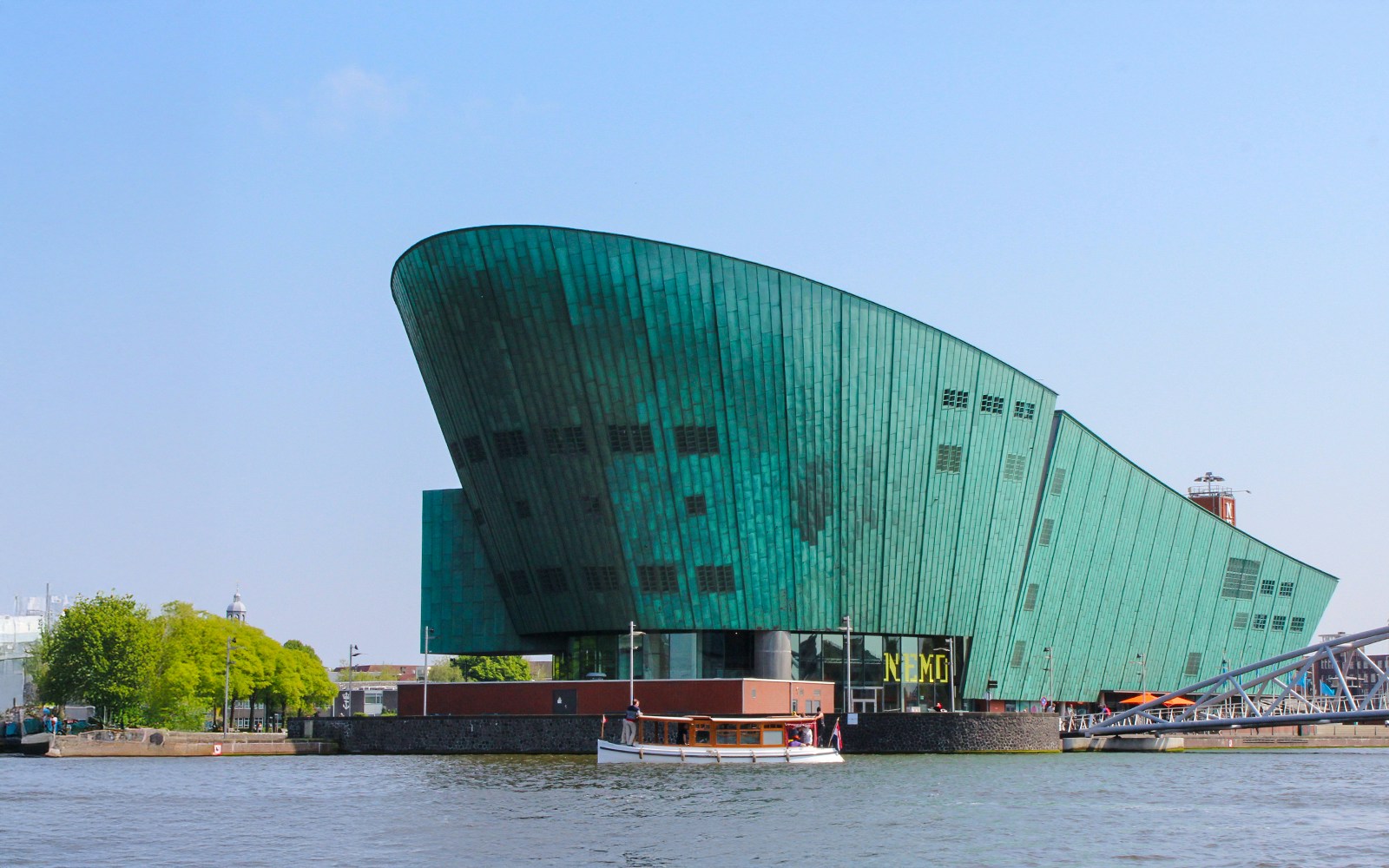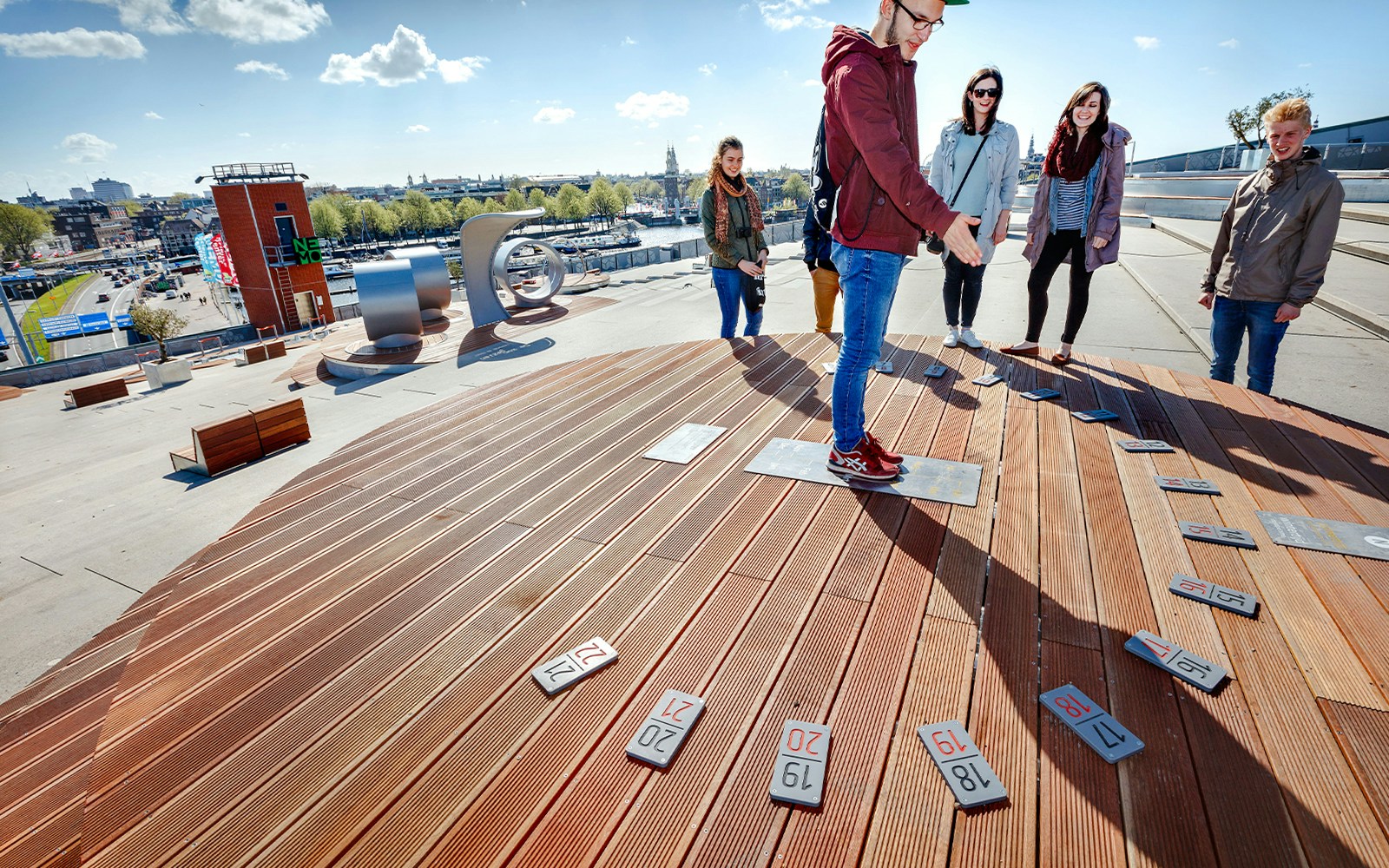Key exterior features of NEMO Science Museum architecture
Ship-like silhouette
The building’s hull-shaped structure appears to rise from the water, reinforcing Amsterdam’s nautical history while creating a futuristic presence along the IJ River.
Copper façade
The façade’s copper plates naturally weather over time, shifting from bright metal to green patina, ensuring the museum evolves visually with the city’s changing skyline.
Panoramic rooftop
The sloping roof serves as one of Amsterdam’s highest public squares, offering free access, city views, and landscaped terraces that merge design with everyday urban life.
Integration with IJ Tunnel
NEMO sits directly above the entrance to the IJ Tunnel, anchoring the structure both physically and symbolically to Amsterdam’s infrastructure and daily flow.




